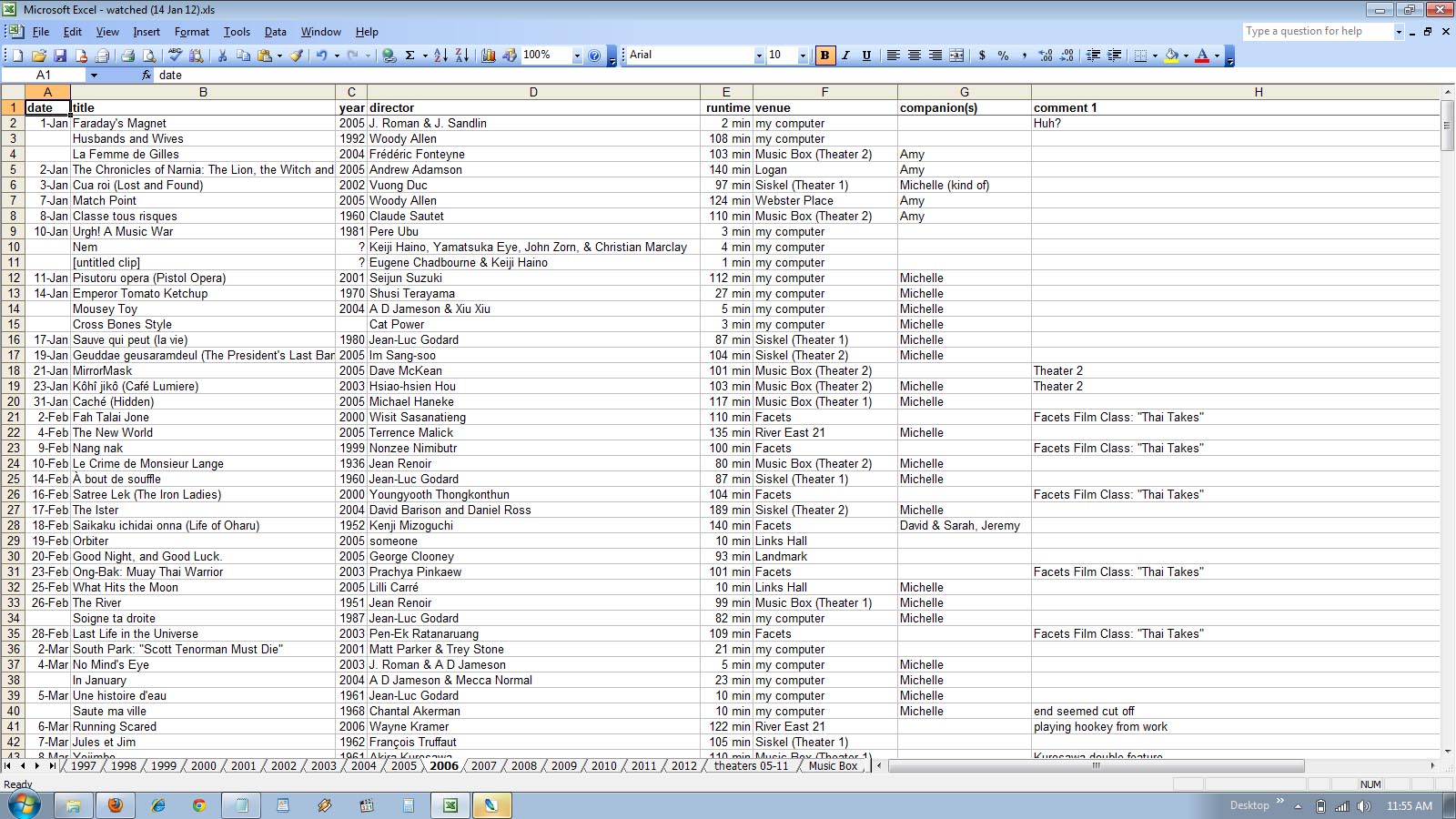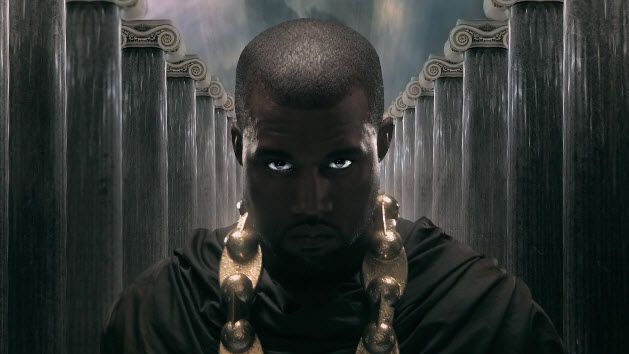How Many Movies Have You Seen?
Over the past 15 years, I’ve kept track of every movie I’ve watched. What started as a simple task has grown increasingly complicated over time, partly due to ways in which movies have changed, but mainly due to how my thoughts about movies have changed. Still, I’ve kept up the habit, first in a composition tablet (now lost), then a sprawling Excel file (a glimpse of which is above—click through or click here for a larger image). Over time, my list of titles has grown to include more relevant information: the date, location, director, run time, year, whom I saw it with, random thoughts I had.
After 15 years, I’ve seen 1925 features. (I haven’t counted the shorts, or any movies I’ve half-seen—and my list doesn’t take into consideration most of the questions I raised in my last post, “How Many Movies Are There?“, as to what constitutes a feature.) That doesn’t sound like too many, not after fifteen years of avid cinephilia. But to put it in some perspective, that’s roughly 128 feature films/year, or about one every three days. Again, this doesn’t include shorts, or TV episodes, or rewatching any of those films—it’s just counts the total of unique feature films. (I used to watch a lot of experimental shorts that aren’t included here, and I’ve taught film classes, which means I’ve seen lots of films numerous times.) (It also doesn’t take into consideration the fact that I’m a writer first and foremost, a cinéaste second.)
We found last week that there have been at least 268,246 features made. (Since then, the IMDb’s count has grown to 268,601.) So I’ve seen little more than .7% of them—and remember, I think that IMDb count far too low. I’ve seen a drop in a drop in a bucket!
But how many movies does anyone ever see? How does my viewing tally compare to, say, a critic like Roger Ebert’s?
How Many Movies Are There?
First, it depends on what you consider a movie. If you define “cinema” as broadly as I do, then the answer is probably “countless.” So let’s pick something more discrete: feature films (which is what most people mean, anyway, when they say “movie”).
There’s no hard and fast rule as to what constitutes a feature. The term itself is a relic of theater-going: the feature film was the featured film—it was what the theater advertised outside, and presumably what compelled you to purchase a ticket and enter—as opposed to the various newsreels, cartoons, and serial installments that also ran (and then, eventually, stopped running). Theater-going in 2012 seems an increasingly old-fashioned hobby (see Roger Ebert’s recent article on declining ticket sales), but we still use the word to mean “a long film.”
But how long? The Wikipedia informs us:
The Academy of Motion Picture Arts and Sciences,[1] the American Film Institute,[2] and the British Film Institute[3] all define a feature as a film with a running time of 40 minutes or longer. The Centre National de la Cinématographie in France defines it as a 35 mm film longer than 1,600 metres, which is exactly 58 minutes and 29 seconds for sound films, and the Screen Actors Guild gives a minimum running time of at least 80 minutes.[4] Today, a feature film is usually between 80 and 210 minutes[citation needed]; a children’s film is usually between 60 and 120 minutes[citation needed]. An anthology film is a fixed sequence of short subjects with a common theme, combined into a feature film.
Let’s go with that 40-minute cutoff. Are we ready to start counting?
My Favorite New Movies of 2011
Happy New Year, HTMLnets. I watched fewer new films in 2011 than usual, but that won’t stop me from opining on what I saw. Although I should clarify that the following list isn’t limited to 2011, but covers “the thirty newish films I saw this past year.” And here are my lists from 2009 and 2010, for comparison’s sake.
We’ll start with the best…
Something Film Understands but that Literature Doesn’t
I was talking with Jeremy M. Davies recently (actually, we were on our way to see Drive), and the topic of genre as art came up. Now, Jeremy and I are both huge into genre, in all media. We’re nuts over spy thrillers, sci-fi, and fantasy, for instance—not to mention Batman comics. (Only the good ones, though, natch.)
And of course lots of people in various lit scenes (all over) don’t think that genre fiction can be art. They’re really wedded to that “high art / low art” divide. (Or the “literary fiction / all else” divide, as it’s so commonly called.)
Me and J, we were saying how we don’t get it. How can someone read, for instance, Patricia Highsmith’s Ripliad and not recognize it as total artistic brilliance? Or Philip K. Dick’s VALIS, which is one of the greatest novels of the 20th century, hands down? And of course I’d argue that Frank Miller’s Batman: The Dark Knight Returns is one of the finest things published in the 1980s, “despite its being” a comic book. (I didn’t spend all that time analyzing it at Big Other because I thought it was merely cute.)
Anyway, I came to a certain conclusion…



